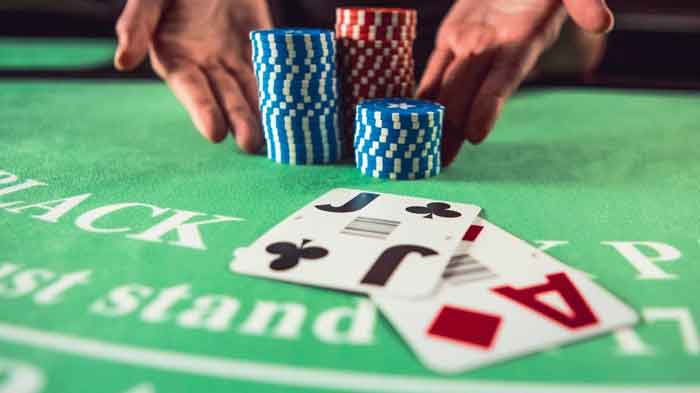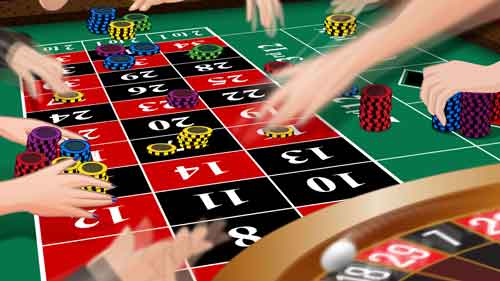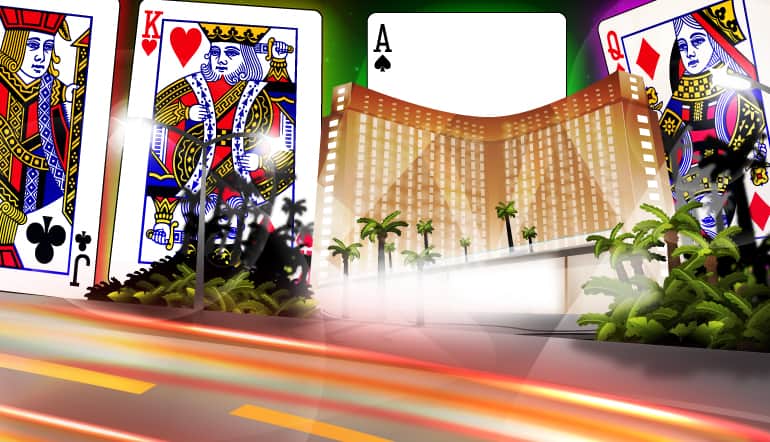Even if you've never played blackjack before and you never visited a land-base casino or an online casino site, you probably already know plenty about this casino game. Blockbuster films from Hollywood studios have glamorized the real deal appeal of blackjack for movie fans around the world.
Boost Your Blackjack Game with Card Counting Strategies
Think of 21 starring Kevin Spacey, Laurence Fishburne, Kate Bosworth, and Jim Sturgess. This film was a runaway success, with a budget of $35 million, and box office takings of $159.8 million. Released in 2008, 21 introduced the world to blackjack card counting. It is based on the true story of the MIT Blackjack Team, as told by Ben Mezrich, ‘Bringing Down The House.’
If you didn't get to see 21, there are plenty of other movies themed around card counting, such as Rain Man (starring Tom Cruise and Dustin Hoffman), Animal World (starring Yifend Li, Yijuan Li, and Bingkun Cao), Holy Rollers: The True Story of Card Counting Christians, and The Last Casino (starring Katharine Isabelle, Charles Martin Smith, and Kris Lemche).
Many other films have touched on card counting, and knowing all the blackjack stats, as a divine ability exclusively available to gifted mathematicians. We're going to debunk the myths and teach you exactly how to count cards in blackjack. No jokes. This is the real deal folks. Sit back, relax, and pay attention. In the next 10 minutes you will know exactly what card counting in casino games is all about. Let's get to it!
Table of Contents
• What is Card Counting in Blackjack?
• How to Count Cards in Blackjack?
• Theoretical Guide to Counting Cards in Blackjack
• How Do You Count Cards in Real Blackjack Games?
• 5 Tips to Maintain a Running Count in the Casino
What is Card Counting in Blackjack?
Blackjack is a game of numbers. Your goal is to simply form a higher hand value than the dealer, without exceeding 21. Many blackjack players mistakenly believe that you have to aim for 21 in order to win. Nothing could be further from the truth. Blackjack rules determine exactly what the dealer is required to do based on the value of the cards. Typically, the dealer draws to 16 and stands on all 17s (hard and soft).
What is a hard 17? Any blackjack hand total that amounts to 17 and includes an Ace valued at 1 is a hard hand. For example: 10 + 6 + Ace = 17. Another hard 17 is 9 + 7 + Ace = 17. Be advised that there doesn't need to be an Ace in a hard 17 if the value of the cards is 17. For example, 10 + 7, or 9 + 5 + 3, et cetera.
What is a soft 17? It is any blackjack hand total that has an Ace valued at 11 to help make a hand total of 17. For example, Ace + 6 = soft 17. Note that the Ace can assume two values in blackjack 1 or 11. When it has a value of 11, you can continue to hit, since the next card won't bust even if it is a 10, Jack, Queen, or King. What happens then is that you still have a hand total of 17. For example, Ace + 6 + 10-value card = 17!
It's all very interesting, but what does all of this have to do with learning how to count cards in blackjack? Believe it or not, this is how card counting begins. You need to have a thorough grasp of blackjack rules in order to make sense of card counting. It's worth taking a look at blackjack card values before we progress with this discussion of card counting.
• Ace – 1 or 11
• 2, 3, 4, 5, 6, 7, 8, 9, 10 – Face Value
• Jack, Queen, King – 10
These blackjack card values are the same in every single blackjack variant. This makes it much easier to apply blackjack card counting techniques across the board. There is a key distinction between blackjack on the one hand, and poker on the other. In blackjack, you’re not competing against other players; it's you versus the dealer. Don't be fooled; the values of cards held by other players is really important when you are counting cards.
From a rudimentary perspective, it's easiest to count cards with a single deck in play. That way, you can manually count cards in your mind, with a relative degree of accuracy. It's much harder when 6 or 8 decks of cards are used. If we assume that you know nothing about counting cards, you do know this:
• There are 4 suits in a deck of cards: hearts, diamonds, spades, and clubs
• There are 52 cards in every deck. That means there are 13 cards in every suit.
• The number of 10-value cards includes: 10, Jack, Queen, King = 4/13 for every suit. That means there are 16 x 10 value cards in a single deck of cards. If you are playing with 6 decks of cards, that means there are 16 x 6 = 96, 10-value cards in play. If you're playing with 8 decks of cards, that means there are 16 x 8 = 128, 10-value cards in play. Regardless, the percentage is identical in all cases. 30.77% of cards in any blackjack game are 10-value cards. That's a pretty high percentage of hitting a 10-value card when you draw in blackjack.
• All other cards, including Ace-9 make up the remaining 69.23% of cards. The Ace complicates issues since it can assume a value of 1 or 11, but never both values simultaneously.
Card counting definition: Blackjack card counting is simply keeping a running count of the cards on the table. This allows you to determine with a degree of accuracy, what cards remain in the deck (still to be dealt) given what is already on the table. Card counting is important since it allows players to ramp up their bets, or tap off based on what is likely to come up.
How to Count Cards in Blackjack?
There are many different ways to count cards. Some card counting techniques are extremely complicated and require teams of card counters working in concert with one another (collusion) which we have no interest in detailing. The card counting technique that we are about to show you is legal and relatively easy to implement. You can count cards on your own, in your mind, with nobody being the wiser. Be discreet about it, since it can be an extremely beneficial blackjack strategy to implement.
Before we get into the nuts and bolts, it's worth pointing out two things:
• The greater the number of low cards remaining in the deck, the worse for you the player. It essentially means that you're much less likely to score a blackjack (21 with your first two cards). It also means that the dealer is less likely to bust (exceed 21). When there are more low-value cards in the deck, you should minimize your bets.
• The greater the number of high cards remaining in the deck, the better for the player. Why? Well, for one thing the dealer is more likely to bust with a high value card, and you're more likely to hit a blackjack. When there are more high-value cards in the deck, you should maximize your bets.
Theoretical Guide to Counting Cards in Blackjack
Start with a single deck of cards. Next, make a note of the following card values:
- 2, 3, 4, 5, 6 = These cards assume a value of (+1)
- 7, 8, 9 = These cards assume a value of (0)
- 10, Jack, Queen, King, Ace = These cards assume a value of (-1)
Now, there is a clear strategy in place. Your goal with card counting is to get a high positive count. That means every time you see a majority of 2, 3, 4, 5, and 6 cards on the table, there is a much higher chance of 10-value cards remaining in the deck.
Put differently, fewer low-value cards will remain in the deck when more of them are visible on the playing field. When the running count is high positive, you should always increase your bets because the likelihood of a 10-value card appearing is much higher.
When the running count is high negative (there are many 10-value cards on the playing field) then you should reduce the size of your bets because the probability of a low-value card coming up on the next deal is high. This inherently benefits the dealer, not the player.
The inclusion of 7, 8, and 9 value cards on the playing field does not affect the count in any way. These cards are valued at 0 and are inconsequential as far as card counting goes. Practice makes perfect. What you want to do is take a single deck of cards and take a piece of white paper with +1 at the top, 0 in the middle, and -1 on the bottom of the piece of paper.
Shuffle the cards in your hands and then flip one over. Using the blackjack rules you've just learned for card counting, place each card in the correct position +1, 0, or -1. As your count grows increasingly positive, so the likelihood of a 10-value card grows. As you count grows large negative, so the likelihood of a card valued at 2, 3, 4, 5, 6 increases.
How Do You Count Cards in Real Blackjack Games?

Of course, in a real blackjack game you’re not going to be handling the deck of cards on your own. At an real money casino site, casino on mobile, or a land-based casino, that responsibility falls on the RNG, or the blackjack dealer. So, what you are going to see is the cards dealt to other players, as well as the dealer’s upcard. Your decisions about whether to hit, stand, double, split, or take blackjack insurance (if applicable) in blackjack games depends upon your assessment of the running count. Consider the following player hands as indicated by the picture above:
We can instantly tell that there are 2 x (-1) value cards = -2 (Ace +10). There are also 3 x (+1) value cards on the table. Therefore, the running count is (+1). This indicates that there is a slight chance of the next card being a high value card. It's insignificant at this point, since there is no high negative value or high positive value. Let's wait for the players to make their bets, as indicated below.

Now, the count gets interesting. Recall that it was +1 before the other cards were dealt. Now, there is a 7, 8 which are 0-value cards. The count is still +1. But there is also a 5 which makes the count +2. The likelihood of a 10-value card coming up on the next deal is higher. The dealer must flip over the hole card and play according to the rules. Remember, blackjack dealers typically draw to 16 and stand on all 17.
As it turned out, the dealer’s hole card was an 8, and the next card in the deck was a King – a high-value card!
Card counting is all about probabilities. The greater the negative account, the higher the probability of a low-value card being dealt. The greater the positive count, the higher the probability of a high-value card being dealt. If you use just a single deck of cards and you go through them one by one, on the final card you will always have a count of 0.
Think of it: There are 5 cards valued at +1. These include 2, 3, 4, 5, 6. There are also 5 cards valued at -1. These include 10, Jack, Queen, King, Ace. All the rest of the cards are 0-value cards. The blackjack card count has to equal 0 on the final card of every deck.
5 Blackjack Tips to Maintain the Running Count in the Casino
• Avoid using your chips to keep track of the count. Casino security will instantly pick up on this type of behavior. If you stack your chips after every round played, you will be flagged.
• You can use your fingers to update the running count. But do this discreetly. This shortcut is especially useful for remembering the running count in between rounds, or between switching dealers.
• Always repeat the running count in your mind all the time. Repetition is the key to remembering the running count. This mental focus is the best way to remember the count.
• Prioritize the running count. It’s imperative that you avoid all distractions at the casino and focus your attention squarely on the running count. Always update the running count as your top priority. Lock down the running count in your head.
• Be proficient at blackjack basic strategy and card counting. Put your whole game together and then you’ll be in a very strong position when playing blackjack.















